
All categories
Featured selections
Trade Assurance
Buyer Central
Help Center
Get the app
Become a supplier

(785 products available)





















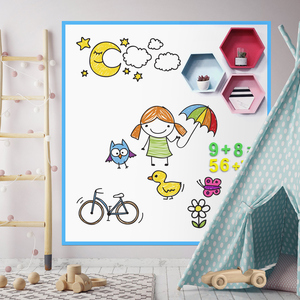
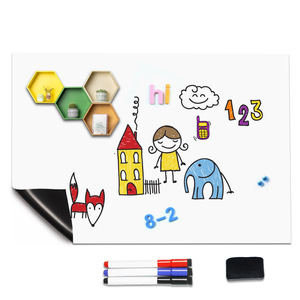
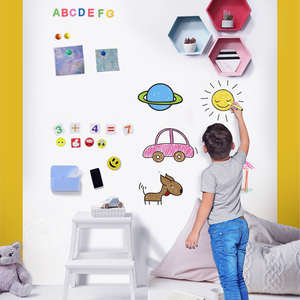
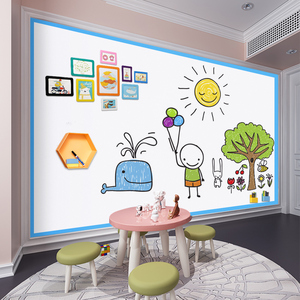
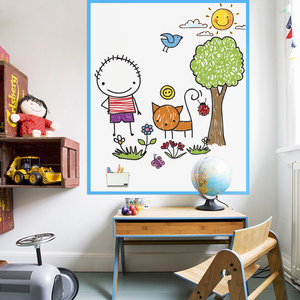




















Children learning charts are invaluable in assisting students in their learning endeavors. They serve as practical, visual tools that make the classroom more interesting. Children learning charts come in various forms, each designed to address different aspects of a child's education. These charts are essential for turning a child's learning experience into an exciting and effective journey.
Here are some types of children's learning charts:
Alphabet charts
Alphabet charts are essential for teaching the letters of the alphabet. These charts usually display upper- and lowercase letters, corresponding pictures, and phonetic sounds. Alphabet charts are used to teach letter recognition, sound association, and beginning phonics.
Number charts
Number charts are used to teach counting, number recognition, and basic math concepts. Number charts are used to display numbers sequentially, such as a hundred chart, a number line, or a simple counting chart. They can be helpful in teaching addition and subtraction and in introducing concepts like skip counting.
Color and shape charts
Color and shape charts are used to teach children about different colors and shapes. These charts usually include a wide range of colors or geometric shapes with corresponding images. They help children develop observational skills and vocabulary and are often used in early childhood education.
Body charts
Body charts illustrate the human body's various parts and systems. They may include diagrams of the skeletal system, muscles, organs, or the five senses. Body charts can help introduce topics related to health, biology, and anatomy in a straightforward and engaging way.
Weather and seasons charts
Weather and seasons charts show the different weather conditions and seasons of the year. These charts often include images representing sunny, rainy, snowy, and windy days. They are used to teach children how to identify and describe weather patterns and to help them understand the changing seasons' impact on the environment.
Solar system charts
Solar system charts display the planets, moons, and other celestial bodies in our solar system. They may include images of the planets, the sun, the moon, and stars, often accompanied by facts and descriptions. Solar system charts can captivate children's interest in space and astronomy and serve as a foundation for lessons on these subjects.
Timeline charts
Timeline charts visually represent historical events, developments, or a sequence of occurrences. They may come in a straight line or spiral form, with markers indicating significant moments in history. Timeline charts can introduce concepts of time, history, and the importance of sequencing events to children.
Story charts
Story charts illustrate the elements of a story, such as characters, setting, plot, and conflict. These charts usually include graphic organizers like story maps or plot diagrams. Story charts are used to teach narrative structure, improve reading comprehension, and assist children in writing their stories.
When picking out a learning chart for kids, consider what subject the child needs help with and what age group the chart is meant for. Also, think about where the chart will hang or stand and if it will be helpful in that location. Ensure the chart has clear pictures and easy-to-read sentences. The colors should catch a child's eye but not be too bright to distract them from the information. The chart should have useful information that is presented in an easy way for kids to understand. It should also have spaces for kids to write or draw if it is a worksheet. Make sure the chart is printed on strong paper so it doesn't tear easily. If the chart will be used a lot, consider getting one that is covered in plastic. Look for charts that have been checked by teachers or other experts to ensure they are correct. Also, check if other parents think the chart is good and if their kids liked it.
Choose a chart that matches what the child is learning in school. It should cover the topics in a fun way that makes kids want to learn. If a child finds the chart interesting, it can help them learn better. Think about what the child needs help with and choose a chart that focuses on that area. For example, if a child struggles with math, look for a math learning chart for kids that explains the concepts in a simple way. Some charts come with extra materials, like activity sheets or online resources. These extras can help make learning more enjoyable and give kids more practice. Ensure the chart is the right size for the space where it will be used. A larger chart may be better for a classroom, while a smaller one may be more suitable for a bedroom or study area. The chart should be easy to move around and hang up. Consider how long the chart will last. If it is only needed for a short time, a regular chart may be enough. But if it is going to be used for a long time, a more durable chart will be a better choice.
The safety and quality of children's learning charts are important to the overall learning experience. For this reason, buyers should ensure that the charts are made of non-toxic materials that have been through rigorous safety testing. Additionally, they should be durable enough to withstand daily use by young learners. Good quality children's learning charts should also be easy to read, with clear illustrations and text that are age-appropriate. They should cover relevant topics in a comprehensive yet concise manner, using bright colors and engaging graphics to capture children's interest. The best children's learning charts should be made from premium materials like waterproof plastic or heavy paper stock with vibrant fade-resistant inks so they can last long, even if exposed to sunlight or handled frequently.
Learning charts for kids should offer a variety of educational content suitable for different age groups, covering subjects such as language development, mathematics basics, science concepts, and social studies. They should provide a comprehensive yet concise overview of each topic, highlighting the most important points in an easily understandable manner. The charts should be designed to withstand wear and tear, with reinforced edges and sturdy hanging mechanisms to prevent them from fraying or falling apart. This will ensure they remain intact even when handled frequently by children.
What type of learning chart is suitable for a five-year-old?
For a five-year-old child, the preferred learning chart is one that is colorful and simple. It should also contain relevant information about the subject matter in a clear and concise manner. The chart should also have images and graphics that can capture the child's attention and assist them in understanding the concepts being taught. Examples of suitable charts for five-year-olds include alphabet charts, number charts, and basic vocabulary charts.
Are learning charts effective?
Yes, learning charts are effective. They are visual tools that provide information in a structured and organized manner. They can help to simplify complex information, making it easier for children to understand and remember. Charts also provide a constant visual reference for students, which can reinforce learning and help to keep information fresh in their minds.
How can learning charts be used at home?
Learning charts can be used at home in various ways. They can be hung on walls, in a study area, or a child's bedroom to create an interactive learning environment. Parents can use the charts as a focal point during study sessions, discussing the information and answering any questions the child may have. They can also be used to track the child's progress in different areas, such as personal development or skills acquisition.
How do I choose the correct learning chart for my child?
When selecting a learning chart for a child, consider their age, developmental level, and the subject matter that needs to be covered. Look for charts that have bright colors, engaging pictures, and simple text. It's also important to choose charts that are of good quality and durable so they can withstand being handled by children.